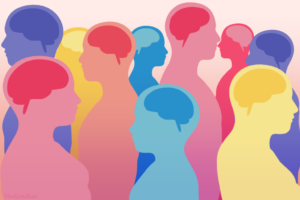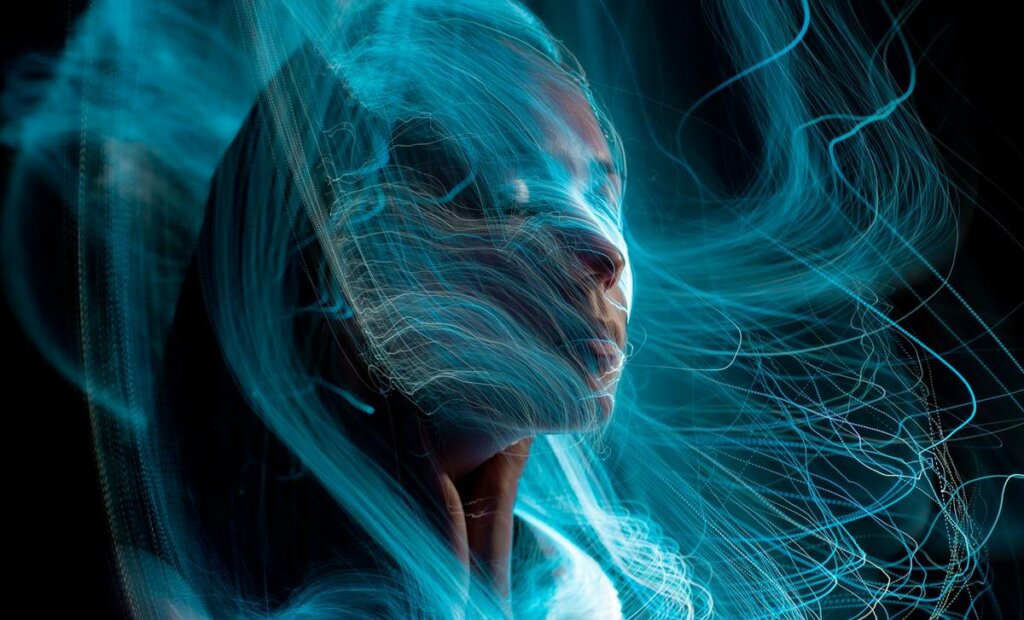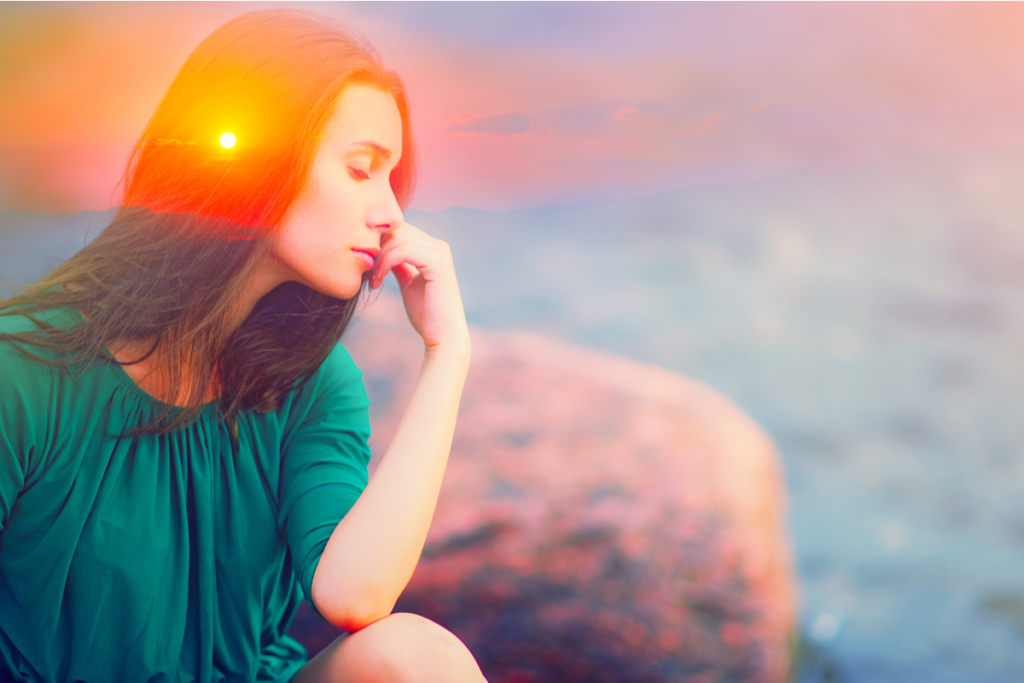Colors are Linked to Emotional Patterns, According to Science


Written and verified by the psychologist Valeria Sabater
What emotion does the color blue evoke in you? How would a room painted yellow make you feel? For years, science has affirmed that colors are associated with emotional patterns. However, trying to understand how our consciousness interprets this type of stimulus remains a challenge for neuroscientists.
For example, in relation to the earlier questions, every interior designer knows that blue tones are associated with calm or that a room painted yellow is related to positivity or dynamism. However, an extremely bright shade of yellow produces anxiety.
As a matter of fact, color is a communication tool capable of inducing emotional and even physiological processes. The fact that this happens is, in itself, pretty fascinating. Because color is really nothing more than a visual perception. It’s the response of the retinal photoreceptors when discriminating the different wavelengths of the electromagnetic spectrum.
We take a look at what happens in the brain from the moment those electromagnetic waves make contact with the eye, to the moment they evoke a specific emotion.
“Each individual has their own unique color, which shines faintly around the contours of their body. Like a halo. Or a backlight.”
-Haruki Murakamii-

Why are colors associated with emotional patterns?
Goethe claimed that we react in different ways to different colors. In fact, it would appear that there’s something in our psychobiological “baggage” that makes us react in one way or another to certain shades of color. Unsurprising then, that color plays a large part in the fields of advertising, art, and even wellness today.
Doctors Andrew J. Elliot and Markus Maier from the University of Rochester (United States) highlight in their 2015 study that most of the research conducted until a few years ago had little scientific rigor. In fact, literature on color and its psychological functioning is still in its early stages today. In addition, the authors of this study stress that the impact that color has on us stems from social learning and also from biological aspects.
This last aspect is the one that arouses the most interest and controversy. Are we perhaps “programmed” to react to one color differently from another? If so, for what reason? These types of questions don’t yet have a consensual answer. However, we do know that colors are associated with emotional patterns.
Cones, the photosensitive cells of the retina
Cones are photosensitive cells found in the retina. All vertebrates have them. In the 1960s, scientists discovered that there are three different types of these kinds of cells. Each of them is specialized in generating a series of sensations when they come into contact with the colors red, green, and blue.
In other words, these photosensitive cells react by inducing unique sensations to each of the three primary colors. For example, one of these cells, known as an L cone cell, is activated by the wave of light that generates red. We can explain this as follows.
The brain associates the color red with important events, it being the color of wounds and blood. Consequently, before this type of stimulus, the human being has always had to react.
On the other hand, green and blue are associated with nature. They’re linked with scenarios that have always been close and familiar to us.
Colors are associated with emotional patterns also due to our experiences
Our previous experiences and even our own culture mediate the way we perceive colors. For example, in many countries, the color white is associated with purity and innocence. However, in certain areas of the East, such as China or Japan, this color is used in funeral rites or during mourning for someone’s death.
The way in which society makes us see a specific color is ingrained in our emotional register. Certain experiences may have the same effect. For instance, you might not like blue because it was the color of your school uniform or maybe it was the color of the hospital room you had to stay in when you were sick.
Colors are associated with emotional patterns that the brain organizes according to our experiences and sociocultural influences. In other words, it’s not only the psychobiological aspect that determines us.

Color and consciousness
One undeniable fact is that colors and the sensations that they produce in us couldn’t exist without our conscience. This is the way in which we perceive reality, recognize, and interpret it. It’s a concept that remains rather difficult to understand and on which William James, father of modern psychology, wrote extensively.
Consciousness has nothing to do with ethics or morals. It’s a process by which we consciously build our own reality of things, of the world, and of our relationship with everything that surrounds us. Colors are associated with emotional patterns because they mediate that internal architecture.
Light and its different shades don’t exist until our consciousness makes contact with them to recognize and interpret them. In essence, we’re the result of our evolution, a complex neural network that reacts to each stimulus based on our accumulated experiences as a species.
However, we’re also what we think and interpret. Colors are a familiar dimension and they constantly envelop us to the point of modifying how we feel.
What emotion does the color blue evoke in you? How would a room painted yellow make you feel? For years, science has affirmed that colors are associated with emotional patterns. However, trying to understand how our consciousness interprets this type of stimulus remains a challenge for neuroscientists.
For example, in relation to the earlier questions, every interior designer knows that blue tones are associated with calm or that a room painted yellow is related to positivity or dynamism. However, an extremely bright shade of yellow produces anxiety.
As a matter of fact, color is a communication tool capable of inducing emotional and even physiological processes. The fact that this happens is, in itself, pretty fascinating. Because color is really nothing more than a visual perception. It’s the response of the retinal photoreceptors when discriminating the different wavelengths of the electromagnetic spectrum.
We take a look at what happens in the brain from the moment those electromagnetic waves make contact with the eye, to the moment they evoke a specific emotion.
“Each individual has their own unique color, which shines faintly around the contours of their body. Like a halo. Or a backlight.”
-Haruki Murakamii-

Why are colors associated with emotional patterns?
Goethe claimed that we react in different ways to different colors. In fact, it would appear that there’s something in our psychobiological “baggage” that makes us react in one way or another to certain shades of color. Unsurprising then, that color plays a large part in the fields of advertising, art, and even wellness today.
Doctors Andrew J. Elliot and Markus Maier from the University of Rochester (United States) highlight in their 2015 study that most of the research conducted until a few years ago had little scientific rigor. In fact, literature on color and its psychological functioning is still in its early stages today. In addition, the authors of this study stress that the impact that color has on us stems from social learning and also from biological aspects.
This last aspect is the one that arouses the most interest and controversy. Are we perhaps “programmed” to react to one color differently from another? If so, for what reason? These types of questions don’t yet have a consensual answer. However, we do know that colors are associated with emotional patterns.
Cones, the photosensitive cells of the retina
Cones are photosensitive cells found in the retina. All vertebrates have them. In the 1960s, scientists discovered that there are three different types of these kinds of cells. Each of them is specialized in generating a series of sensations when they come into contact with the colors red, green, and blue.
In other words, these photosensitive cells react by inducing unique sensations to each of the three primary colors. For example, one of these cells, known as an L cone cell, is activated by the wave of light that generates red. We can explain this as follows.
The brain associates the color red with important events, it being the color of wounds and blood. Consequently, before this type of stimulus, the human being has always had to react.
On the other hand, green and blue are associated with nature. They’re linked with scenarios that have always been close and familiar to us.
Colors are associated with emotional patterns also due to our experiences
Our previous experiences and even our own culture mediate the way we perceive colors. For example, in many countries, the color white is associated with purity and innocence. However, in certain areas of the East, such as China or Japan, this color is used in funeral rites or during mourning for someone’s death.
The way in which society makes us see a specific color is ingrained in our emotional register. Certain experiences may have the same effect. For instance, you might not like blue because it was the color of your school uniform or maybe it was the color of the hospital room you had to stay in when you were sick.
Colors are associated with emotional patterns that the brain organizes according to our experiences and sociocultural influences. In other words, it’s not only the psychobiological aspect that determines us.

Color and consciousness
One undeniable fact is that colors and the sensations that they produce in us couldn’t exist without our conscience. This is the way in which we perceive reality, recognize, and interpret it. It’s a concept that remains rather difficult to understand and on which William James, father of modern psychology, wrote extensively.
Consciousness has nothing to do with ethics or morals. It’s a process by which we consciously build our own reality of things, of the world, and of our relationship with everything that surrounds us. Colors are associated with emotional patterns because they mediate that internal architecture.
Light and its different shades don’t exist until our consciousness makes contact with them to recognize and interpret them. In essence, we’re the result of our evolution, a complex neural network that reacts to each stimulus based on our accumulated experiences as a species.
However, we’re also what we think and interpret. Colors are a familiar dimension and they constantly envelop us to the point of modifying how we feel.
All cited sources were thoroughly reviewed by our team to ensure their quality, reliability, currency, and validity. The bibliography of this article was considered reliable and of academic or scientific accuracy.
- Azeemi ST, Raza SM. A critical analysis of chromotherapy and its scientific evolution. Evid Based Complement Alternat Med. 2005;2(4):481-8. doi:10.1093/ecam/neh137
- Elliot AJ, Maier MA, Moller AC, Friedman R, Meinhardt J. Color and psychological functioning: the effect of red on performance attainment. J Exp Psychol Gen. 2007;136(1):154-68. doi:10.1037/0096-3445.136.1.154
- Elliot AJ. Color and psychological functioning: a review of theoretical and empirical work. Front Psychol. 2015;6:368. doi:10.3389/fpsyg.2015.00368
- Jonauskaite D, Abu-Akel A, Dael N, Schrag Y, Sultanova A, Uusküla M, Vainio S, Wąsowicz G, Zdravković S, Zhang M, Mohr C. Universal Patterns in Color-Emotion Associations Are Further Shaped by Linguistic and Geographic Proximity. Psychol Sci. 2020 Oct;31(10):1245-1260. doi: 10.1177/0956797620948810. Epub 2020 Sep 8. PMID: 32900287.
This text is provided for informational purposes only and does not replace consultation with a professional. If in doubt, consult your specialist.







